Former ASFE President, Kenneth E. Darnell’s Passing
On April 27, 2022 Kenneth E. “Ken: Darnell, P.E. of Loudon, Tennessee passed away. 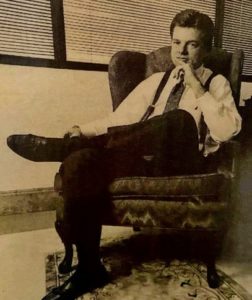 Ken was a significant contributor to our Association and served on the Board of Directors and as the President of ASFE in 1995-1996. He recognized the importance of mentorship.
Ken was a significant contributor to our Association and served on the Board of Directors and as the President of ASFE in 1995-1996. He recognized the importance of mentorship.
During his Presidency, he was instrumental in starting the Fundamentals of Professional Practice program which was for many years a rite of passage for rising stars in geoprofessional firms across North America.
Here is what a few of Ken’s friends and colleagues shared:
“Ken was an extremely clever guy, but just humble enough that you had to love him. Since I worked closely with Ken on the ASFE Board of Directors when he was the President, there is one particular impact that Ken had on our firm and many other ASFE firms at that time. That was back in the day that everyone was hung up on Quality and TQM. Ken had the ability to cut right to the chase. In this case, his reaction was to introduce us to W. Edwards Deming. The quality guru. Of any management consultant, Deming is the one person I think about when I’m really perplexed, i.e. “what would Deming have said?” because he spoke in such simple terms. Just like Ken did.” ~ Richard T. “Dick” Reynolds, PE, F. GBA, Past President (1996-1997)
“He was, all in all, a true professional. His ready smile and infectious laugh could obscure the fact that he was a master of geotechnical engineering, extraordinarily intelligent, and wise. As significant as his accomplishments might have been, however, he was quick to deflect praise and give credit to others whenever he believed it was their due . . . which was often.” ~ John Bachner, CEO Bachner Communications, Inc. and EVP of ASFE/GBA (1975-2015)
“I worked closely with Ken over the years, and he consulted with us as Terra’s first, Engineer Claim Consultant. He sorted out difficult engineering claim issues for us and simplified complex discussions. He was so smart- an intellectual- but he would never say so and would chafe at the moniker. I really liked Ken. He was such a wonderful person.” David L. Coduto, President, and CEO of Terra Insurance Company.
“Ken was a mentor to me for many years. He was a strong influence in my professional career and also a good friend. Countless times I benefited from having him as a sounding board and listening to his sagged, southern wisdom. His encouragement was one of the main reasons I became more deeply involved with GBA (ASFE). The values and behaviors that Ken exhibited were also reflected in GBA.
Our organization benefited from Ken’s leadership and involvement. His contributions were many. I feel very fortunate to have worked closely with him in the consulting business and in giving back to the profession. I’m a better person and professional for having known him.” Jay Martin, P.E., F.GBA GBA Past President (2010-2011)
More information about Ken Darnell can be found in his obituary: HERE

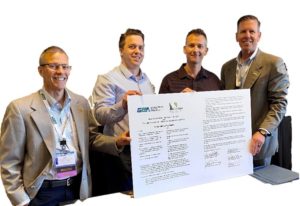 shared interests, the Geoprofessional Business Association (GBA) and the California Geotechnical Engineering Association (CalGeo) agree to formalize their relationship in advancing their mutual interests in confronting risk, optimizing performance, and promoting the value of the geoprofession, particularly on behalf of geotechnical and environmental engineers and engineering geologists through this Memorandum of Understanding (MOU).”
shared interests, the Geoprofessional Business Association (GBA) and the California Geotechnical Engineering Association (CalGeo) agree to formalize their relationship in advancing their mutual interests in confronting risk, optimizing performance, and promoting the value of the geoprofession, particularly on behalf of geotechnical and environmental engineers and engineering geologists through this Memorandum of Understanding (MOU).”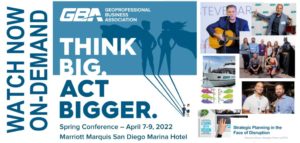 agreed that the keynote presentations were outstanding. Each was educational, entertaining, and inspiring. Now you can watch, listen to, and learn from these speakers too, on your own schedule.
agreed that the keynote presentations were outstanding. Each was educational, entertaining, and inspiring. Now you can watch, listen to, and learn from these speakers too, on your own schedule. recent successes, share new goals for the coming year, and review opportunities for collaboration, all in an effort to best serve GBA and our members. Like an orchestra, GBA is an ensemble that produces the best results when the distinct groups work together. (40 minutes)
recent successes, share new goals for the coming year, and review opportunities for collaboration, all in an effort to best serve GBA and our members. Like an orchestra, GBA is an ensemble that produces the best results when the distinct groups work together. (40 minutes)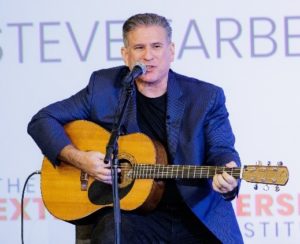 passion, determination, foresight, dedication, and fearlessness. In an encore performance for our THINK BIG, ACT BIGGER Conference, Steve Farber shows you how to use the LEAP framework – Love, Energy, Audacity and Proof to radically improve your organization and your life.
passion, determination, foresight, dedication, and fearlessness. In an encore performance for our THINK BIG, ACT BIGGER Conference, Steve Farber shows you how to use the LEAP framework – Love, Energy, Audacity and Proof to radically improve your organization and your life.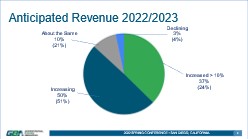 of the economy and assessment of the geoprofessional industry. During this brief presentation, Jason Stoops (G2 Consulting) shares the survey results so that you can assess how your firm and region is performing relative to others in the nation. (13 minutes)
of the economy and assessment of the geoprofessional industry. During this brief presentation, Jason Stoops (G2 Consulting) shares the survey results so that you can assess how your firm and region is performing relative to others in the nation. (13 minutes)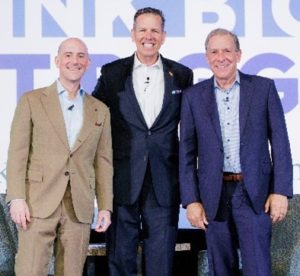
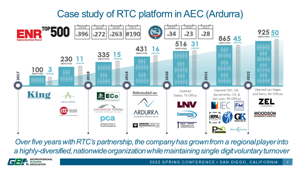 consulting engineering and science practices. This interest will only continue to grow due to the strong tailwinds around the space regarding the repair, modernization and construction of infrastructure and a renewed concern about the environment. Private equity firms are active acquirors across businesses of all sizes and can be an attractive option when it comes to ownership succession. During this session led by Christopher Lee (RTC Partners), learn why private equity has interest in consulting, engineering, and science practices. Understand how private equity can provide additional optionality in ownership succession. Explore staff growth opportunities through private equity capital infusion. (26minutes)
consulting engineering and science practices. This interest will only continue to grow due to the strong tailwinds around the space regarding the repair, modernization and construction of infrastructure and a renewed concern about the environment. Private equity firms are active acquirors across businesses of all sizes and can be an attractive option when it comes to ownership succession. During this session led by Christopher Lee (RTC Partners), learn why private equity has interest in consulting, engineering, and science practices. Understand how private equity can provide additional optionality in ownership succession. Explore staff growth opportunities through private equity capital infusion. (26minutes) global pandemic with almost 50% of employees resigning and/or actively seeking new jobs. Employees are no longer human capital to be leveraged. They are key stakeholders in your business. They want their companies to have purpose, to have a soul, and they are not going to settle for anything less. The workplace and the workforce are shifting, and no amount of planning or stabilizing structure is going to stop it.
global pandemic with almost 50% of employees resigning and/or actively seeking new jobs. Employees are no longer human capital to be leveraged. They are key stakeholders in your business. They want their companies to have purpose, to have a soul, and they are not going to settle for anything less. The workplace and the workforce are shifting, and no amount of planning or stabilizing structure is going to stop it. geoprofessional firms a chance to supplement and diversify their staff, improve performance, achieve efficiencies, and innovate. Geo-consulting firms can get more work done with fewer people. Many firms have opportunities for growth or market expansion but are limited by a shortage of geoprofessionals. New technologies and automation provide new options to mitigate that labor shortage. This presentation by Dimitrios Zekkos, Ph.D., P.E. (University of California at Berkeley) demonstrates how applications of technology and automation can achieve unprecedented efficiencies. Topics include Robots, UAVs, Artificial Intelligence, Satellites and use of Multi-Scale Frameworks to mitigate risk. (51 minutes)
geoprofessional firms a chance to supplement and diversify their staff, improve performance, achieve efficiencies, and innovate. Geo-consulting firms can get more work done with fewer people. Many firms have opportunities for growth or market expansion but are limited by a shortage of geoprofessionals. New technologies and automation provide new options to mitigate that labor shortage. This presentation by Dimitrios Zekkos, Ph.D., P.E. (University of California at Berkeley) demonstrates how applications of technology and automation can achieve unprecedented efficiencies. Topics include Robots, UAVs, Artificial Intelligence, Satellites and use of Multi-Scale Frameworks to mitigate risk. (51 minutes)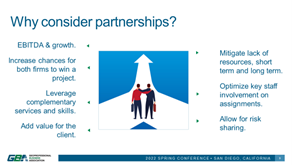 50% of something rather than nothing? Forging partnerships or consortiums with competitors to bid on larger projects and better execute the job has proven to be a winning approach for Martin LaRoche P.Eng (Kiewit) and François Santerre (Englobe). This presentation covers elements that can make a partnership or consortium with competitors a success. In addition, real situation examples are shared on some things not to do. Topics discussed include partnership / consortium opportunities and the criteria that make for a good fit; contractual agreements to adopt and why; terms between partner entities; scope split and selection of key resources; how to secure clients; project executive committee and its role; what happens if something goes wrong; and much more. (46 minutes)
50% of something rather than nothing? Forging partnerships or consortiums with competitors to bid on larger projects and better execute the job has proven to be a winning approach for Martin LaRoche P.Eng (Kiewit) and François Santerre (Englobe). This presentation covers elements that can make a partnership or consortium with competitors a success. In addition, real situation examples are shared on some things not to do. Topics discussed include partnership / consortium opportunities and the criteria that make for a good fit; contractual agreements to adopt and why; terms between partner entities; scope split and selection of key resources; how to secure clients; project executive committee and its role; what happens if something goes wrong; and much more. (46 minutes) our contributions to the geoprofessional community, and our conferences are mostly driven by volunteer leaders.
our contributions to the geoprofessional community, and our conferences are mostly driven by volunteer leaders.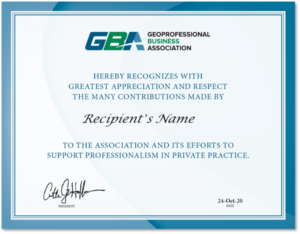
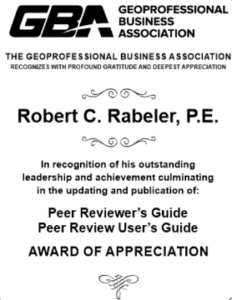 in extraordinary and unique ways during the year.
in extraordinary and unique ways during the year.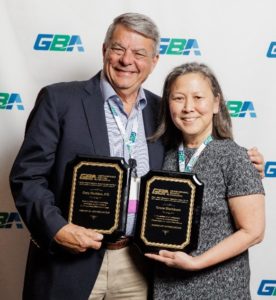 to create a new program where people with similar roles in member companies could come together in small groups to help each other, share best practices, and solve common problems. The same things we do throughout our association but in small groups for CEO’s, COO’s, CFO’s, and HR professionals. Imagine having a small group of like-minded people from different companies coming together regularly, with the help of a facilitator, to talk through common issues.
to create a new program where people with similar roles in member companies could come together in small groups to help each other, share best practices, and solve common problems. The same things we do throughout our association but in small groups for CEO’s, COO’s, CFO’s, and HR professionals. Imagine having a small group of like-minded people from different companies coming together regularly, with the help of a facilitator, to talk through common issues.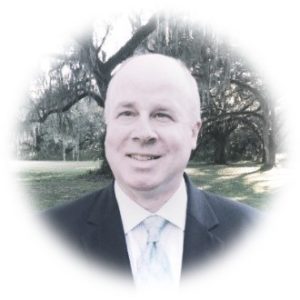
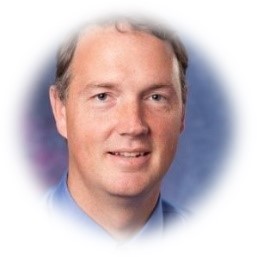

 In 2020, the GBA Board of Directors identified an opportunity to celebrate greatness of our members as they use GBA’s best practices to manage risk and optimize performance on notable projects. This is the second year we presented the Project Award of Excellence to one of our member firms.
In 2020, the GBA Board of Directors identified an opportunity to celebrate greatness of our members as they use GBA’s best practices to manage risk and optimize performance on notable projects. This is the second year we presented the Project Award of Excellence to one of our member firms.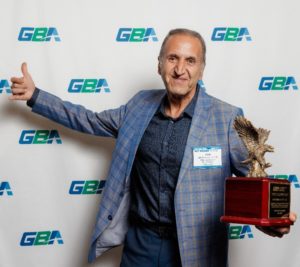 for the contributions they made to our Association during the year of his/her presidency.
for the contributions they made to our Association during the year of his/her presidency.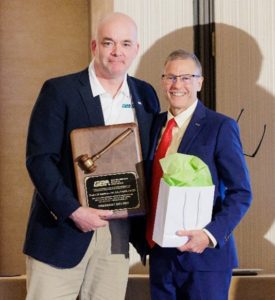 resources to benefit members, and increased engagement with alliance organizations in support of the Elevate Geoprofessional Value campaign.
resources to benefit members, and increased engagement with alliance organizations in support of the Elevate Geoprofessional Value campaign.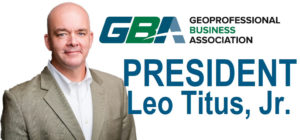 and chair the group’s board of directors.
and chair the group’s board of directors.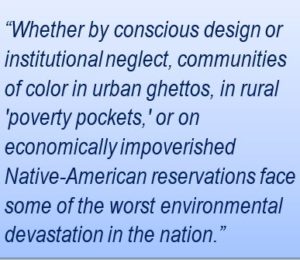 Environmental justice (EJ) involves the fair treatment and meaningful involvement of all people regardless of race, color, national origin, or income as it relates to development, implementation and enforcement of environmental laws, regulations, and policies. No group bears disproportionate share of negative environmental consequences. Groups and individuals have an opportunity to participate in decisions and voice community concerns as it relates to EJ.
Environmental justice (EJ) involves the fair treatment and meaningful involvement of all people regardless of race, color, national origin, or income as it relates to development, implementation and enforcement of environmental laws, regulations, and policies. No group bears disproportionate share of negative environmental consequences. Groups and individuals have an opportunity to participate in decisions and voice community concerns as it relates to EJ.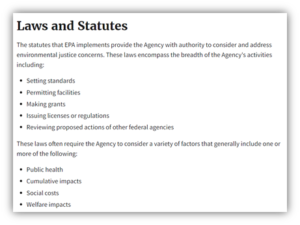 agencies recently made EJ a priority in future strategic planning. Specifically, Executive Order 12898 in 1994 started the EJ movement. EJ integration at the EPA has occurred with every regional and headquarter office having an EJ coordinator. The EJ coordinators have a suite of programs in specific areas of interest such as air quality, drinking water, hazardous waste sites, and lead.
agencies recently made EJ a priority in future strategic planning. Specifically, Executive Order 12898 in 1994 started the EJ movement. EJ integration at the EPA has occurred with every regional and headquarter office having an EJ coordinator. The EJ coordinators have a suite of programs in specific areas of interest such as air quality, drinking water, hazardous waste sites, and lead.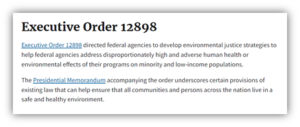 GBA firms provide assistance with permitting considerations during hearings, on submitted plans, and through various other outreach channels. With more focus on EJ, public outreach and community learning becomes a valuable input for regulatory agencies. Experience with managing EJ concerns in our projects can be a significant competitive advantage to GBA members
GBA firms provide assistance with permitting considerations during hearings, on submitted plans, and through various other outreach channels. With more focus on EJ, public outreach and community learning becomes a valuable input for regulatory agencies. Experience with managing EJ concerns in our projects can be a significant competitive advantage to GBA members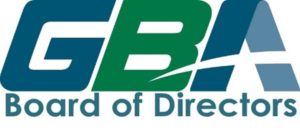
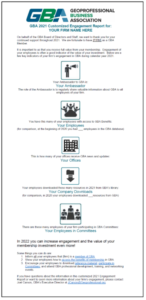 Engagement of your employees is often a good indicator of the value of your investment.
Engagement of your employees is often a good indicator of the value of your investment.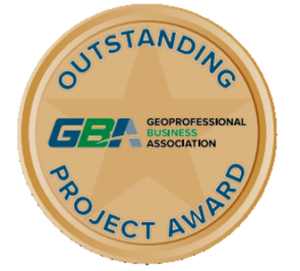 GBA will recognize some of the most outstanding projects by its members who live and demonstrate the vision of GBA to great accomplishment. Winners of this award will truly showcase their hard work and contributions to society in front of all of their peers, clients and other professionals from across North America.
GBA will recognize some of the most outstanding projects by its members who live and demonstrate the vision of GBA to great accomplishment. Winners of this award will truly showcase their hard work and contributions to society in front of all of their peers, clients and other professionals from across North America. EPA for review, EPA has not issued a statement concurring that the revision meets the minimum performance requirements of the AAI process and consequently is not technically suitable for use in asserting the various “due diligence” defenses to CERCLA liability. EPA representatives were intimately involved in the revision process, and it is very unlikely that EPA will not concur. We don’t expect to see their official concurrence until sometime in the middle of 2022 at the earliest. Nothing in the revised standard reduces the level of effort, or eliminates elements of the process, compared to the previous version; consequently, a consultant complying with the requirements of the revised standard will have complied with the previous version as well. There should be no reason to avoid citing the revised standard even in the absence of formal concurrence by EPA. Additionally, because the federal “All Appropriate Inquiry” rule is a performance-based test, rather than a prescriptive procedure, EPAs concurrence states that using the ASTM standard is one method, but not the only method, of complying with AAI.
EPA for review, EPA has not issued a statement concurring that the revision meets the minimum performance requirements of the AAI process and consequently is not technically suitable for use in asserting the various “due diligence” defenses to CERCLA liability. EPA representatives were intimately involved in the revision process, and it is very unlikely that EPA will not concur. We don’t expect to see their official concurrence until sometime in the middle of 2022 at the earliest. Nothing in the revised standard reduces the level of effort, or eliminates elements of the process, compared to the previous version; consequently, a consultant complying with the requirements of the revised standard will have complied with the previous version as well. There should be no reason to avoid citing the revised standard even in the absence of formal concurrence by EPA. Additionally, because the federal “All Appropriate Inquiry” rule is a performance-based test, rather than a prescriptive procedure, EPAs concurrence states that using the ASTM standard is one method, but not the only method, of complying with AAI.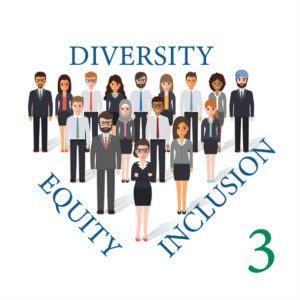
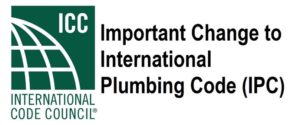 mandate how under-slab plumbing is to be protected from expansive soil, reducing professional liability risk for geotechnical engineers. Rather than wait for local building codes to adopt the 2024 IPC (which will take several years), the Geoprofessional Business Association (GBA) recommends that member-firms address this issue now for project sites with expansive soils and start referencing the new 2024 IPC language now in their geotechnical reports. Details of the code change and GBA’s recommendations are provided below.
mandate how under-slab plumbing is to be protected from expansive soil, reducing professional liability risk for geotechnical engineers. Rather than wait for local building codes to adopt the 2024 IPC (which will take several years), the Geoprofessional Business Association (GBA) recommends that member-firms address this issue now for project sites with expansive soils and start referencing the new 2024 IPC language now in their geotechnical reports. Details of the code change and GBA’s recommendations are provided below.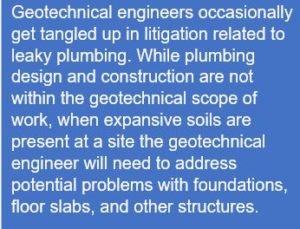 the geotechnical engineer will need to address potential problems with foundations, floor slabs, and other structures. Water from leaking plumbing can cause expansive clay soils to swell much more than anticipated.
the geotechnical engineer will need to address potential problems with foundations, floor slabs, and other structures. Water from leaking plumbing can cause expansive clay soils to swell much more than anticipated.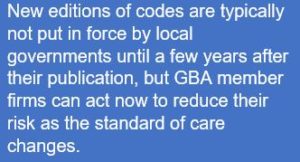 until a few years after their publication, but GBA member firms can act now to reduce their risk as the standard of care changes. Rather than waiting years for these new plumbing code provisions to be enacted by the local government, GBA recommends that member firms act now for project sites with expansive soils. Taking this action now will also be beneficial for projects where the Uniform Plumbing Code (UPC) is in force; the UPC will not be making similar changes. For geotechnical reports on projects with expansive soils where the floor slab will be above a crawlspace or void forms, GBA recommends that the reports include recommendations that are consistent with this new section of the 2024 IPC, regardless of whether the IPC or the UPC is locally adopted. Specifically, the following (or similar) text could be used in a geotechnical report:
until a few years after their publication, but GBA member firms can act now to reduce their risk as the standard of care changes. Rather than waiting years for these new plumbing code provisions to be enacted by the local government, GBA recommends that member firms act now for project sites with expansive soils. Taking this action now will also be beneficial for projects where the Uniform Plumbing Code (UPC) is in force; the UPC will not be making similar changes. For geotechnical reports on projects with expansive soils where the floor slab will be above a crawlspace or void forms, GBA recommends that the reports include recommendations that are consistent with this new section of the 2024 IPC, regardless of whether the IPC or the UPC is locally adopted. Specifically, the following (or similar) text could be used in a geotechnical report: “silver lining” for GBA and our member firms as the virtual environment delivered high-value content deep into our member firms. In fact, the attendance of GBA Conferences during the pandemic far exceeded our expectations with more than twice the number of people attending virtually as normally attend a GBA conference in person.
“silver lining” for GBA and our member firms as the virtual environment delivered high-value content deep into our member firms. In fact, the attendance of GBA Conferences during the pandemic far exceeded our expectations with more than twice the number of people attending virtually as normally attend a GBA conference in person.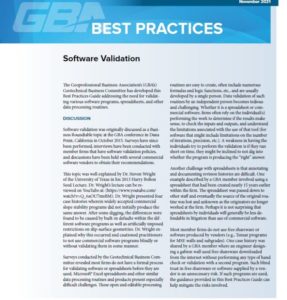 validating software or spreadsheets before they are used. This Best Practices document reviews the risks of using commercial software and spreadsheets blindly or without validation which may lead to inaccurate results and exposure to loss and litigation. It also provides recommended practices to manage risk by increasing accuracy of spreadsheets and software that you can start implementing now.
validating software or spreadsheets before they are used. This Best Practices document reviews the risks of using commercial software and spreadsheets blindly or without validation which may lead to inaccurate results and exposure to loss and litigation. It also provides recommended practices to manage risk by increasing accuracy of spreadsheets and software that you can start implementing now.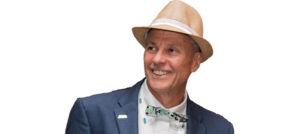 casual afternoon of information and social networking with friends and colleagues from across GBA. Tom will introduce you to friends as we wind down the week and toast the weekend with a seasonal beverage.
casual afternoon of information and social networking with friends and colleagues from across GBA. Tom will introduce you to friends as we wind down the week and toast the weekend with a seasonal beverage. for the holidays, mulled wines have been a favorite since the 2nd Century AD when Romans created the drink to fortify themselves against the cold.
for the holidays, mulled wines have been a favorite since the 2nd Century AD when Romans created the drink to fortify themselves against the cold.